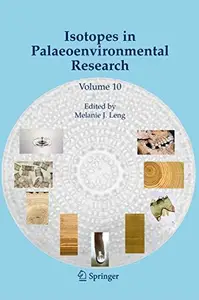
Free Download Isotopes in Palaeoenvironmental Research By W. GEORGE DARLING, ADRIAN H. BATH (auth.), Melanie J. Leng (eds.)
2006 | 307 Pages | ISBN: 1402025033 | PDF | 9 MB
This volume is intended to show how stable isotopes can be applied to understanding the palaeoenvironment. There are chapters on the interpretation of isotopes in water, tree rings, bones and teeth, lake sediments, speleothems and marine sediments. Crucial to the understanding of the environmental signal contained within the isotope composition of different materials is to gain more information about how rainfall isotope compositions are determined by climate. Chapter 1 (Darling et al. ) describes O, H and C stable isotope compositions in the modern day water and aqueous carbon cycles to provide a framework for the interpretation of these isotopes in the past. The chapter on the water cycle divides naturally into a number of sections. The starting point, precipitation, is especially important because it is the precursor to which most O and H isotope proxy studies are attempting to relate. While much is understood about the isotope systematics of precipitation, largely owing to the existence of the IAEA- WMO Global Network for Isotopes in Precipitation (GNIP), important questions remain to be answered in relation to the isotope-temperature gradients of past climatic conditions. The chapter describes the three reservoirs of water sustaining all terrestrial proxies; soil and vadose zone moisture, groundwater, and surface waters. In each reservoir isotope effects intervene to modify to a greater or lesser extent the isotope signature of antecedent precipitation; groundwaters are least affected and surface waters the most.
Code:
Bitte
Anmelden
oder
Registrieren
um Code Inhalt zu sehen!